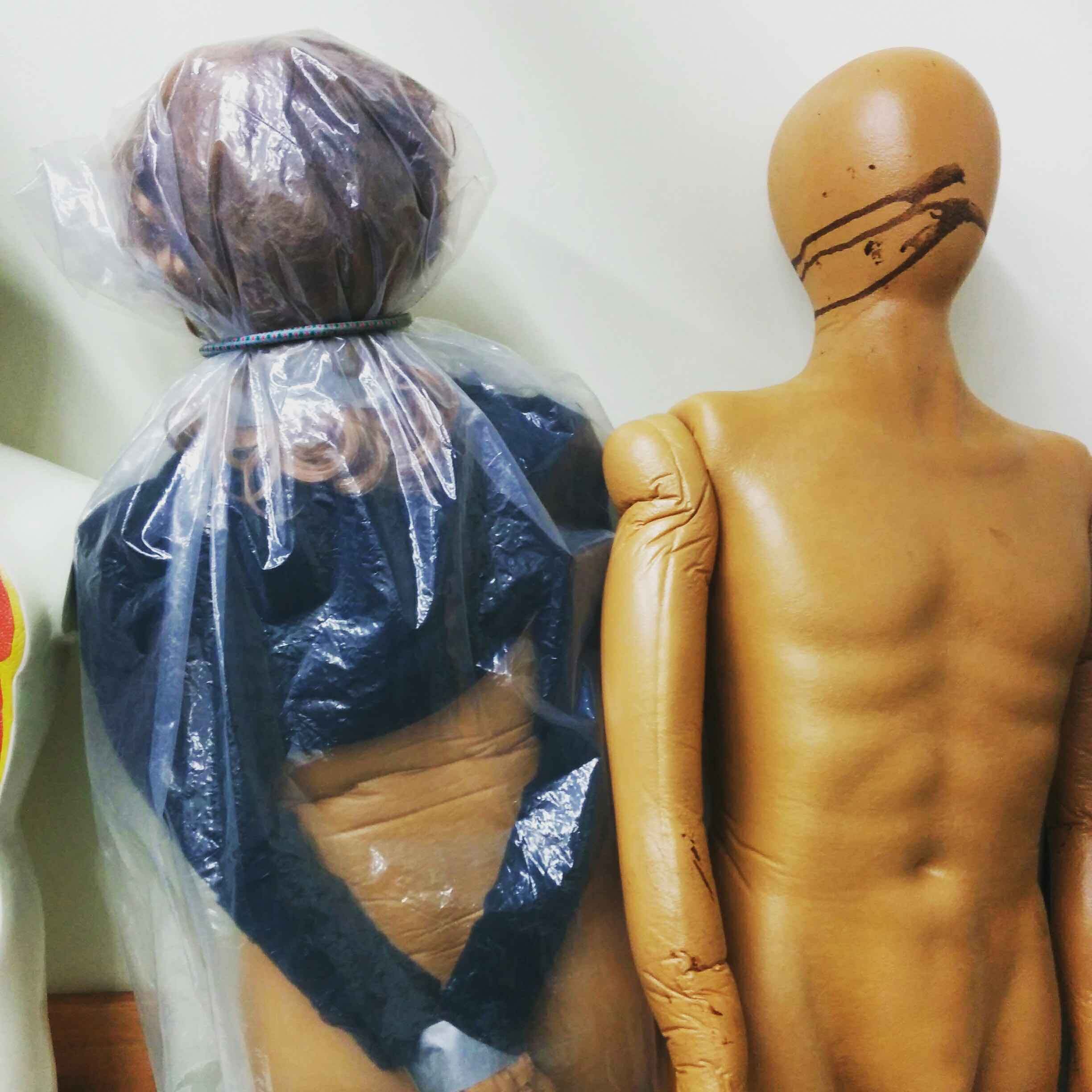1800 Paseo Rancho Castilla LA 90032
The Spider-Man Bandit & The Artificial Human Head: Breakthroughs in Crime Scene Investigation
The Los Angeles Visionaries Association, Esotouric and Professor Donald Johnson invite you to the Cal State Los Angeles teaching crime lab for an afternoon’s inquiry into the history and practice of forensic science in Southern California, in support of new research coming out of the Criminalistics Department.
Join us for an afternoon exploring cold case investigations and cutting edge advances in forensic science.
Presentation One – Building A Better Human Head
Professor David Raymond will discuss the development of a human head surrogate for blood spatter dynamics research, which is a joint project of his Applied Injury Biomechanics Lab and the CSULA Criminalistics Department.
Dr. Raymond will explain the engineering behind crafting a surrogate human head which responds to injury just like a real one, and how this helps in the forensic investigation of crime scenes. He will also host an interactive blood spatter lab demonstration, using a human head surrogate and a variety of destructive tools.
Presentation Two –Breaking a 44-Year Old Cold Case
Criminalist and historian Meiling Cabral presents on the 1972 murder of Helen Meyler, solved after four decades through the use of DNA technology.
BACKGROUND: On the morning of Sunday, August 27, 1972, the body of 78-year-old woman was discovered. A recent widow, Helen Meyler lived alone in her second-floor mid-Wilshire apartment. The victim was found by her daughter and son-in-law, when they arrived to pick her up for church. She was lying on her back in bed with her nightgown pulled up around her waist. Blankets covered her body and a pillow covered her face. The victim had several visible wounds to the right side of her head. A metal and glass candelabra lay on the unoccupied, adjacent bed. Pieces of broken metal and glass were scattered on her bed, the floor and underneath both beds. There was blood spatter on the wall behind the beds. There were no signs of forced entry into the apartment. The bedroom sliding glass window was open, and the screen had been removed and was lying on the floor below. The apartment had been ransacked. On August 28, the Deputy Medical Examiner of the Los Angeles County Coroner’s Office determined the cause of death to be blunt force trauma to the head. The murder remained unsolved.
In 2014, LAPD detectives assigned to the Cold Case Homicide Unit began reviewing a large backlog of unsolved cases, hoping to utilize DNA to solve them. In July 2014, LAPD Detectives re-opened the case of victim Meyler. A DNA case consultation was arranged with the Serology DNA Unit of the LAPD Forensic Science Division. Of the remaining evidence still in Property Division was a blanket taken from the victim’s bed, semen was detected and a cutting was taken for DNA analysis.
An unknown male DNA profile was obtained from the sperm fraction and was uploaded to The Combined DNA Index System, (CODIS). On September 21, 2014, a CODIS hit was obtained. In January 2015, LAPD Detectives obtained a reference sample from the putative perpetrator for the CODIS confirmation. The DNA profile obtained from the sperm fraction of the cutting from the blue and white blanket matched the reference sample. After 44 years, the identity of the murderer was revealed.
Harold Holman, now 70, was found guilty in July of the first degree murder of Helen Meyler. The jury of nine women and three men returned the verdict shortly after closing arguments concluded. He was sentenced to life in prison.
At the time his DNA was linked to the murder of Helen Meyler, Holman was 34 years into serving a 45-year sentence for a double murder and a string of high-rise residential burglaries in the 1970s. He scaled the outside of tall buildings using suction cups and night vision goggles, these weird access methods earning him the nickname “Spider-Man.”
Presenter Meiling Cabral is Editorial Secretary of the California Association of Criminalists, and a criminalist for the LAPD. Meiling combines a practicing forensic scientist’s experience and an historian’s passion for reconstructing the past.
